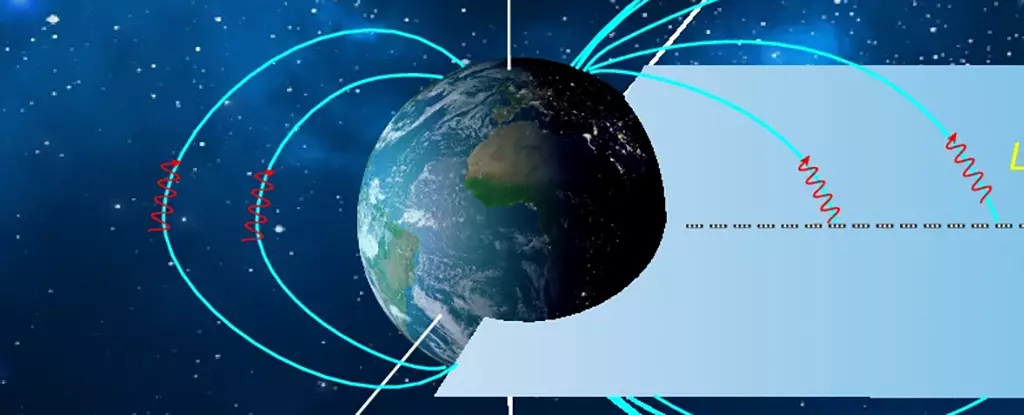An international team of astronomers has recently made significant strides in understanding the enigmatic phenomenon known as chorus waves. Detected in a surprising region of space beyond our planet, these signals have raised fundamental questions about their origin and behavior. Characterized by fleeting bursts of electromagnetic radiation, chorus waves emit sounds reminiscent of birds chirping when converted into audio. While the scientific community has recognized their existence for decades, this recent discovery pushes the boundaries of what we know about these signals and their implications for space science.
The consensus among researchers has traditionally linked chorus waves to plasma instabilities—chaos in ionized gases that lead to the release of electromagnetic waves. However, new data suggests that these waves can manifest far beyond the previously understood limits of Earth’s magnetic influence. With this breakthrough, a reevaluation of classic theories surrounding chorus waves seems necessary, as they now appear to exist in conditions previously thought to be inhospitable for their formation.
Historically, chorus waves have only been detected within a radius of about 51,000 kilometers (31,690 miles) from Earth, aligning with regions where the magnetic field resembled a conventional dipole. This correlation suggested a relationship between the generation of chorus waves and a neatly organized magnetic structure. However, recent research has identified similar electromagnetic bursts at a distance of approximately 165,000 kilometers (102,526 miles) away, within an area where Earth’s magnetic field displays a complex, distorted shape.
This revelation implies that the creation of chorus waves is not exclusively determined by the structural clarity of the local magnetic environment, which contradicts previous models. Instead, researchers suggest that different conditions across various regions in space can also facilitate the development of these intriguing signals. The implications of this finding could fundamentally alter our understanding of not only chorus waves but also the mechanisms that govern electromagnetic interactions throughout the cosmos.
The groundbreaking study relies on advanced high-resolution images gathered by the NASA Magnetospheric Multiscale (MMS) mission, which was launched in 2015. By analyzing this data, researchers could trace the origins of these newly detected waves and compare them to their counterparts closer to Earth. This capacity to observe and identify chorus waves in varying environments emphasizes the importance of modern technology in expanding the horizons of space research.
Moreover, the study confirmed the presence of a previously hypothesized process: the transfer of energy from plasma particles to chorus waves, particularly evident in areas referred to as electron holes, where electron density is notably low. This interaction, driven by a phenomenon known as electron cyclotron resonance, produces unique chirping patterns where the frequencies of the electrons and the waves align, resulting in significant energy transfer.
The implications of understanding chorus waves extend beyond mere curiosity about their sound. Chorus waves contribute notably to Earth’s radiation belts, which play a vital role in the dynamics of space weather that can impact satellite operations and communication systems. As such, further investigations into their behavior are crucial for safeguarding technological infrastructures on Earth.
Furthermore, these findings hold significance not just for our planet but also for other celestial bodies. Mars, Jupiter, and Saturn, among others, also exhibit chorus waves, which signifies a broader cosmological phenomenon governed by magnetic fields. Insights gained from studying these waves could pave the way for comprehending how magnetic fields shape not only planetary atmospheres but also interstellar environments.
The recent discoveries regarding chorus waves compel scientists to reconsider previous assumptions about their origins and behaviors. As this international team of astronomers unravels the complexities of these intriguing signals, they not only illuminate new pathways for understanding space plasma dynamics but also enhance our comprehension of the intricate tapestry of the universe. With more research to come, we may yet uncover further mysteries of cosmic signals that continue to intrigue and inspire.

